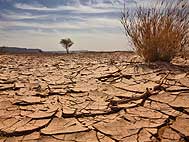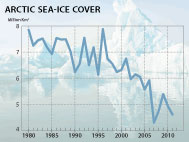| SEARCH |
-

Nov 17, 2015
Reflections on a three-decade legacy
The International Geosphere-Biosphere Programme (IGBP) will come to a close at t...
-
Nov 17, 2015
Use of and access to content on this website
Text and images produced by IGBP in house are free to use with appropriate credi...
-
Nov 12, 2015
Bella Gaia performance and panel discussion to mark IGBP's closure
A musical performance by Bella Gaia will celebrate the achievements and legacy o...
-

Towards Future Earth:
evolution or revolution?
During its three decades of existence, the International Geosphere-Biosphere Pro...
-
A personal note on IGBP and the social sciences
Humans are an integral component of the Earth system as conceptualised by IGBP. João Morais recalls key milestones in IGBP’s engagement with the social sciences and offers some words of advice for Future Earth.
-
IGBP and Earth observation:
a co-evolution
The iconic images of Earth beamed back by the earliest spacecraft helped to galvanise interest in our planet’s environment. The subsequent evolution and development of satellites for Earth observation has been intricately linked with that of IGBP and other global-change research programmes, write Jack Kaye and Cat Downy .
-
Deltas at risk
Around 500 million people worldwide live on deltas, but many of the world's deltas are sinking due ...
-
Climate change: the state of the science
A new data visualization released on the first day of the plenary negotiations at the UNFCCC’s clima...
-
Climate Change:
the State of the Science
Videos now online from the Stockholm public forum to mark the launch of the IPCC's climate report, 2...
Global changes in extreme events: regional and seasonal dimension
Climatic Change (2012)
Orlowsky B and Seneviratne S I
DOI: 10.1007/s10584-011-0122-9
Vol 110, Issue 3-4, pp 669-696

Abstract
This study systematically analyzes the complete IPCC AR4 (CMIP3) ensemble of GCM simulations with respect to changes in extreme event characteristics at the end of the 21st century compared to present-day conditions. It complements previous studies by investigating a more comprehensive database and considering seasonal changes beside the annual time scale. Confirming previous studies, the agreement between the GCMs is generally high for temperature-related extremes, indicating increases of warm day occurrences and heatwave lengths, and decreases of cold extremes. However, we identify issues with the choice of indices used to quantify heatwave lengths, which do overall not affect the sign of the changes, but strongly impact the magnitude and patterns of projected changes in heatwave characteristics. Projected changes in precipitation and dryness extremes are more ambiguous than those in temperature extremes, despite some robust features, such as increasing dryness over the Mediterranean and increasing heavy precipitation over the Northern high latitudes. We also find that the assessment of projected changes in dryness depends on the index choice, and that models show less agreement regarding changes in soil moisture than in the commonly used ‘consecutive dry days’ index, which is based on precipitation data only. Finally an analysis of the scaling of changes of extreme temperature quantiles with global, regional and seasonal warming shows that much of the extreme quantile changes are due to a seasonal scaling of the regional annual-mean warming. This emphasizes the importance of the seasonal time scale also for extremes. Changes in extreme quantiles of temperature on land scale with changes in global annual mean temperature by a factor of more than 2 in some regions and seasons, implying large changes in extremes in several countries, even for the commonly discussed global 2°C-warming target.
IGBP closed at the end of 2015. This website is no longer updated.
-

Global Change Magazine No. 84
This final issue of the magazine takes stock of IGBP’s scientific and institutional accomplishments as well as its contributions to policy and capacity building. It features interviews of several past...
-

Global Change Magazine No. 83
This issue features a special section on carbon. You can read about peak greenhouse-gas emissions in China, the mitigation of black carbon emissions and the effect of the 2010-2011 La Niña event on gl...
-
INTERGOVERNMENTAL PANEL ON CLIMATE CHANGE:
How green is my future?
UN panel foresees big growth in renewable energy, but policies will dictate just how big.
-
UK:
'The Anthropocene: a new epoch of geological time?'
Royal Society, Philosphical Transactions A




















